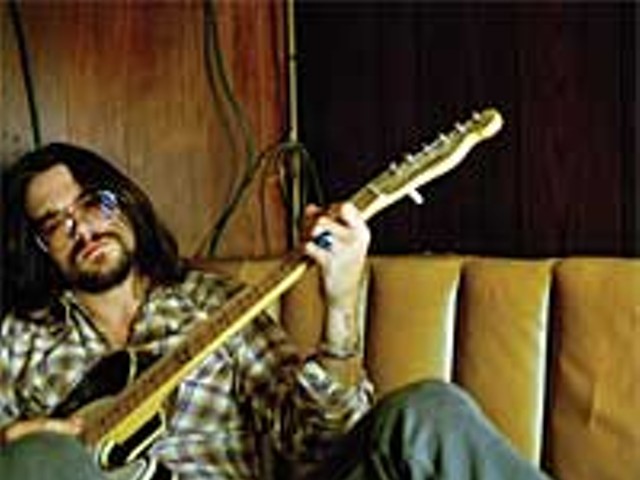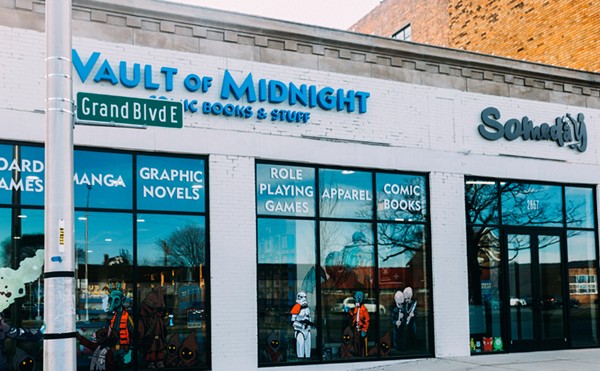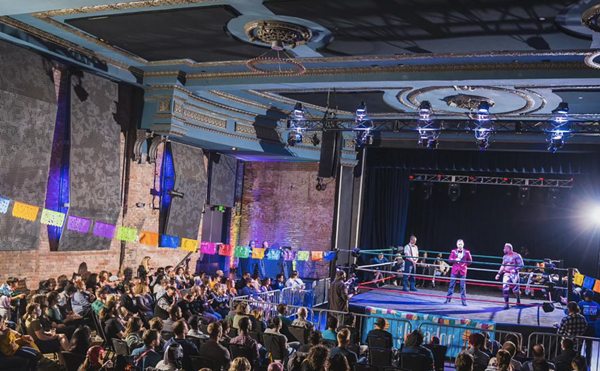A bouquet of fake red roses. Images of pie slices, eyeglasses, automobiles, a GE logo, a steam iron huffing and puffing and a triple life-size, three-dimensional see-through keyhole. These diverse emblems appear in rat-a-tat succession at the entrance to the University of Michigan Museum of Art’s Pop! exhibition. It is the mass-produced stuff of everyday life — selected, honored and dissed by an international cadre of pop artists in the 1950s and 1960s — setting the brisk pace and snappy ambience of this 100-item display in Ann Arbor.
Though by now the world seems to have had more than its share of pop art, Monet and King Tut shows, Pop! has historical muscle and aesthetic chops to spare. For one thing, curators Carole McNamara and Sean Ulmer have been strict in focusing primarily on vintage works of the ’60s and ’70s, when pop was hot. Inaugurated in Britain in the 1950s, pop became an international cause célèbre by the early 1960s.
One of the satisfactions of the show is the generous representation of British pop artists, especially the redoubtable Eduardo Paolozzi. The dozen collage-like Paolozzi compositions, whose titles range from “War Games Revisited” (1967) to “Mumbling and Munching to Muzak” (1970), amount to a mini overview of his witty, two-dimensional work. Though Jim Dine, Roy Lichtenstein, Robert Indiana, Claes Oldenburg and Andy Warhol are also amply displayed, they don’t hog the show as one might expect.
But why slight the contemporary French Nouveaux Realistes (except for Christo’s cellophane-wrapped roses)? Why no Arman “accumulation” of consumer items or a Jacques de la Villegle “décollage” of posters peeled from a Parisian wall? Or a Martial Raysse celebrity portrait outlined with neon tubing? Or a depiction of a voluptuous Nana by feminist sculptor Niki de Saint-Phalle?
Nevertheless, the design of the installation is handsome and engaging; it zigzags through the capacious second-floor exhibition galleries. Anchored by a carpet the color of asphalt and set against a backdrop of white walls, the mostly primary-hued pop artifacts punctuate the walls like blinking traffic signals. And while works on paper dominate the show, judiciously selected paintings fill out the narrative.
In “big” museums, works on paper are typically used to supplement paintings and sculptures, while here two- and three-dimensional works (often the modus operandi for university museums) reinforce but do not overwhelm the predominant graphic media. Choice paintings and sculptures by Lichtenstein, for example, cogently augment his prints.
The inclusion of images that bite and sting contribute to the heft and substance of the show. All too easily, pop has been commoditized into an accessible, defanged celebration of things “American” rather than the complexly layered aesthetic it is, whether addressing consumerism, mass media, celebrity-worship or politics. Richard Hamilton’s colored screen print “Kent State” (1970) is based on a grainy photograph he took of a prone, bloodied student from a television set. And Lichtenstein’s felt banner “Pistol” (1964), produced the year after President Kennedy’s assassination, represents a 5-foot-tall pistol aimed directly at the viewer. (No Sister Corita uplift there). Warhol’s potent “Birmingham Race Riot” (1964) is also included. In fact, this section of the show, captioned “Social and Political Arena,” also features Indiana’s map and text of Philadelphia, Miss., described as the “hind part” of the United States. The piece is all too relevant, considering a man was recently tried and convicted in Philadelphia for the slaying of three civil rights workers in 1964.
One may also note the sly implication of the side-by-side hanging of two Warhols, a pyramid of nine Campbell’s Soup cans adjacent to a grid of 12 images of one smiling woman, as if to suggest that both are in effect “canned” products.
Though there may be no compelling reason for a pop art show now — the UMMA press release refers to it as one of its “vibrant and historic summer exhibitions” — historically and artistically, this is a solid, satisfying show. And it certainly justifies the museum’s aesthetic hubris and marketing expense in producing a full-color advertising insert, distributed regionally in the Sunday New York Times a couple of weeks ago. It is a show to make much over.
Through Sept. 25 at the University of Michigan Museum of Art, 525 S. State St., Ann Arbor; 734-763-8662.
Dennis Alan Nawrocki travels the state looking at art and writing about it where he finds it. Send comments to [email protected]




